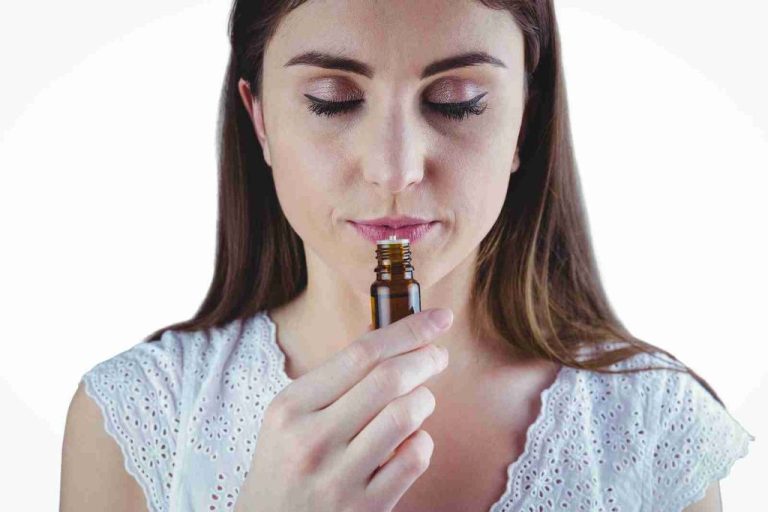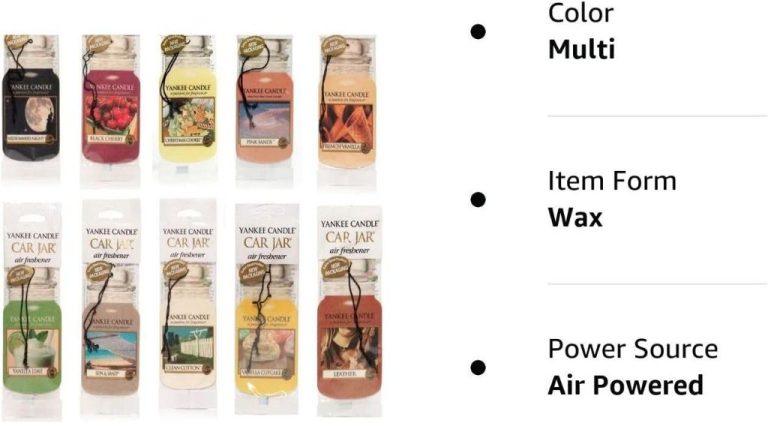How Do You Make Tea Lights Smell Good?
Tea lights are small candles in metal or wax holders, usually measuring 1-3 inches wide and 1/2 – 1 inch tall. They are designed to provide gentle illumination and aroma. Making tea lights smell good typically involves adding scented fragrance oils to the wax before pouring the candles. This allows the aroma to slowly diffuse into the air as the candle burns.
The process of making scented tea lights includes choosing fragrance oils, calculating how much to use, adding oils to the wax, selecting wicks, making molds, melting and pouring wax, troubleshooting, and decorating. With some simple preparation and care, it’s easy to make great-smelling tea lights at home.
Choosing Fragrance Oils
Selecting the right fragrance oil is arguably the most important step in making scented tea lights. There are many types of fragrance oils to choose from, with varying scent profiles and intensities.
Some popular types of fragrance oils for candles and wax melts include:
- Floral – Rose, jasmine, lavender
- Fruity – Strawberry, peach, citrus
- Bakery – Vanilla, sugar cookie, cinnamon roll
- Herbal – Eucalyptus, sage, mint
- Spicy – Cinnamon, clove, ginger
When buying fragrance oils, look for options specifically designed for candle making. These are formulated to mix well with wax and produce an even, strong scent when burned. Stay away from fragrance oils for soap, lotions or perfumes as they may not give the desired results.
Consider getting sample sizes of new fragrances to test out before committing to larger quantities. This allows you to experiment and find your favorites.
Choose fragrances based on the season, holiday or overall theme you want your tea lights to represent. For gifts, consider the recipient’s favorite scents.
Calculating How Much to Use
When adding fragrance oils to candle wax, it’s important to use the right amount. Too much fragrance oil can cause issues like not letting the wax properly harden, producing more soot, and making the scent overpowering. Too little fragrance oil means the candle won’t have much aroma when burned. The general recommended usage is 0.5-1.5% of the wax weight. So for example if you have 10 ounces of wax, you’d use 0.05 to 0.15 ounces of fragrance oil.
To figure out the percentages, divide the weight of fragrance by the weight of wax and multiply by 100. Here’s the math for a 10 ounce candle with 0.5 ounces of fragrance oil:
0.5 oz fragrance ÷ 10 oz wax = 0.05
0.05 x 100 = 5%
Some tips when testing fragrance percentages:
- Start low at 0.5% and slowly increase in batches to find the optimal amount.
- Natural wax like soy or beeswax need a higher fragrance load closer to 1.5%.
- Strong fragrances like citrus or mint will smell stronger than mild fragrances like lavender.
- The wax cooling method affects intensity – candles cooled in the fridge versus at room temperature will have different intensities.
- Test the cured candle scent by burning for a short time to ensure it’s not too overpowering.
Take notes each time you test so you learn how much fragrance to use for that particular wax and oil blend.
Adding Fragrance Oil
Adding fragrance oil at just the right time and mixing it thoroughly is key to getting evenly scented, fragrant tea lights. There are two options for when to add the fragrance oil:
1. Add the fragrance oil to the wax once it has fully melted. Make sure the wax is completely liquid with no lumps or chunks before stirring in the oil. Use a spoon, chopstick, or skewer to gradually incorporate the oil, stirring continuously to distribute it evenly.
2. Add the fragrance oil to the wax as it melts. As soon as the wax begins softening, stir in the oil a little at a time. The heat will help diffuse the oil throughout the wax. Continue stirring frequently as the wax finishes melting.
No matter when you add the fragrance oil, the key is to mix thoroughly to fully incorporate the oil. Stir slowly and patiently to prevent bubbles from forming. Bubbles can affect how the finished candle burns. Mix for at least 2-3 minutes once all the oil has been added until no streaks remain.
Choosing Wax
When making scented tea lights, you have several options for the type of wax to use. The most common are paraffin, soy wax, and beeswax. Each has its own advantages and disadvantages.
Paraffin wax is a petroleum byproduct that is odorless, colorless, and inexpensive. It has a high melting point which makes it ideal for containers with wider surface areas like tea lights. The hot throw (scent strength when burning) of paraffin is moderate. However, some avoid paraffin because it is not a natural product.
Soy wax is made from soybeans so it is a renewable and sustainable resource. It is also biodegradable. Soy wax has a lower melting point than paraffin so it works better in smaller tea light containers. It holds scent well but can have a weaker hot throw than paraffin. Soy wax is also more prone to frosting on the surface.
Beeswax is all-natural wax made by honey bees. It has a pleasant honey aroma of its own and excellent scent retention. Beeswax has a high melting point so it may not be ideal for small tea light containers. It is also more expensive than other waxes. Beeswax candles burn longer and cleaner than paraffin or soy.
When choosing wax, consider the shape of your tea light containers, your budget, and if you want an all-natural product. Testing different waxes can help determine which works best for your specific tea lights.
Wick Selection
Choosing the right wick is crucial for tea lights. The wick determines how well the candle will burn. For tea lights, slimmer wicks typically work best.
Look for wicks that are designed for containers with a diameter of 1-2 inches, which is the standard size for tea lights. Popular options include:
- CD wicks – slim cotton wicks perfect for tea lights
- Eco wicks – slimmer braided cotton wicks
- HTP wicks – skinny paper-cored wicks ideal for small containers
Avoid using medium or large wicks, as they may create overly large flames and produce a lot of soot. The wick should be just wide enough to support the melt pool but not so wide that it overwhelms the tea light.
You can also find pre-tabbed wicks specifically made for tea lights. These have a metal tab already attached at the bottom to make wicking easier.
Test different wick types and sizes to determine the best option for your wax type, fragrance oil, and container. This will ensure your tea lights burn properly without issues like tunneling.
Making Molds
You can make custom candle molds out of a variety of materials. Here are some of the most common:
Silicone – Food-grade silicone is one of the best materials for candle molds. It’s heat resistant, flexible, and easy to pop the finished candles out of. You can buy silicone mold making kits and pour it into candy molds or other objects to create custom molds.
Wood – Unfinished wood can be used to carve simple candle molds. Avoid treated lumber as the chemicals can contaminate the wax. Wood molds should be lined with a release agent so the candle can be removed.
Glass or Metal – Glass jars, cups, and bowls make great improvised molds. The candle will need to be popped out when cooled. Make sure the container can withstand boiling water. Smooth metal baking tins can also work.
Plastic – Food containers, yogurt cups, trays from packaging can all be repurposed as molds. Avoid soft plastics that may melt from the hot wax. Rigid plastics like food containers work best.
When making your own molds, make sure they are clean and dry before pouring in wax. Applying petroleum jelly or cooking spray will help the candle release from the mold. Secure molds on a flat surface before pouring to prevent spills.
Melting and Pouring
Properly melting and pouring the wax is crucial to making great smelling tea lights. Here are some tips:
Melting the Wax
The wax should be melted slowly and evenly to the proper pouring temperature. There are a few options for melting:
- Use a double boiler to gently melt the wax to 175-185°F. This prevents overheating.
- Use a dedicated wax melter which allows temperature control. Set to 175-185°F.
- Melt wax in a slow cooker on low setting. Use a thermometer and adjust heat as needed.
Stir regularly while melting. If overheated, the wax can discolor or lose its scent throw. Melting too fast also causes bubbles.
Pouring Temperature
For tea lights, pour wax at 175-185°F. This temperature ensures proper melt pool and burn characteristics. If wax is too hot, it can burn the fragrance oil. Too cold, and the wax may set up too quickly leading to poor fragrance throw and rough tops.
Cooling
Allow the filled molds to sit undisturbed as they cool. This prevents bubbles from forming on the top as the wax cools and hardens. Cool at room temperature for 12-24 hours before removing from the molds.
Troubleshooting Tea Lights
There are a few common issues that can arise when making scented tea lights. Here’s how to troubleshoot and fix them:
Tea Light Has No Scent
If your tea light has no scent even though you added fragrance oil, try adding a bit more oil next time. The waxabsorbs the fragrance, so you generally need more scent than you might expect. Start with the manufacturer’s recommended amount, and increase by 1/4 teaspoon increments until you reach the desired strength.
Also make sure to thoroughly stir the wax and oil together before pouring so the fragrance gets evenly distributed. And always use a scent and wax that are compatible.
Black Smoke or Soot
If your tea light produces black smoke or leaves soot marks, the wick is likely too large for the wax pool. Try using a smaller wick next time so the flame isn’t too big. Trim the wick to 1/4″ length to prevent excess smoke.
Soot can also happen if the candle isn’t burning hot enough. Make sure you’re using wax with the proper melting point and give the wax pool time to fully liquefy before lighting.
Wax Dripping Down the Sides
If wax drips down the sides of the container as the candle burns, the wax may be too soft for the climate or conditions. Try a wax with a higher melting point. Adding a bit of vybar or steric acid to the wax can also help strengthen it.
Make sure to pour wax at the proper temperature as well. Cooler temps make the wax thinner and more prone to dripping. Follow the manufacturer’s recommendations for ideal pouring temps.
Decorating and Display Ideas
Once your scented tea lights are complete, you can get creative with decorating and displaying them to maximize their visual appeal. Here are some ideas:
Labeling
Print custom labels showcasing the fragrance inside so people know the scent before lighting them. You can print them on sticker paper and affix to the tea light containers or print them on paper and attach with string or raffia. Think about giving them eye catching designs to complement the scent name.
Packaging
Package the tea lights in cellophane bags with a label, ribbon and raffia for gift giving. Tie several together in bundles for hostess or holiday gifts. Package them in decorative tins or boxes for lovely table centerpieces or displays. Include a decorative tea light holder and you have a complete set.
Arrangement Ideas
Group assorted scented tea lights together in decorative candelabras, lanterns or candlesticks on side tables, counters, mantels or entries for ambiance. Place one scented tea light on each dinner plate for a special meal. Arrange down the center aisle of an outdoor wedding ceremony or line a pathway at a special event. There are endless possibilities for creatively displaying scented tea lights to delight family and friends.



